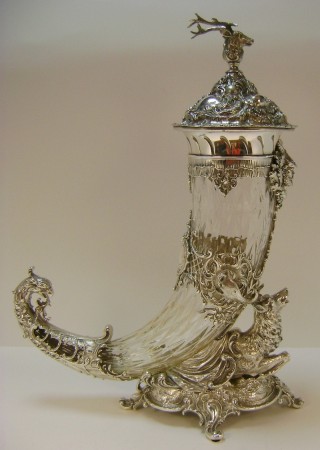
Shown: A WMF blown glass and silver plated drinking horn, Ca. 1885. [JS]
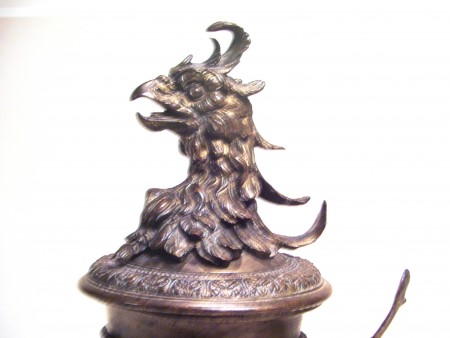
“Greifen = Griffin!” The legendary animal that started all this, “drinking from his claws” way back in the European early middle ages. Detail of horn lid = see last example this page.
BELOW: AN EXCERPT FROM AN ARTICLE ENTITLED: “DRINKING VESSELS” – TAKEN FROM “THE 1911 ENCYLOPEDIA”
“The use of special vessels for drinking purposes may fairly be assumed to have had a natural origin and development. From a practical point of view it would soon be found desirable to provide vessels for liquids in addition to those serving to hold food. As in many other commonplace details of modern life, we must turn to the primitive races to understand how our present conditions were reached. In almost all parts of the world many of the products of nature are capable of serving such purposes, with little or no change at the hands of man; in tropical and sub-tropical climates the coco-nut and the gourd or calabash require but little change to adapt them as the most convenient of drinking utensils; the eggs of the larger birds, such as the ostrich or the emu, shells, like the nautilus and other univalves, as well as the deeper bivalves, are equally convenient.
As we shall see, civilized man has adopted nearly all the natural forms that were found convenient by the savage, altering and adorning them in accordance with the taste of the time or country where they were used.”
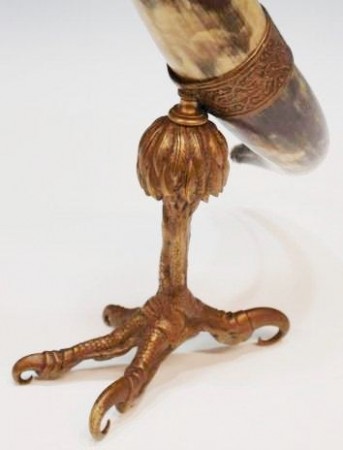
Griffin Claw, on a Griffen Claw Drinking horn. – The early Nordics fancied the idea of the existence of Griffins, a beast that was made of the head and legs of an eagle and the body of a lion. And so the horns themselves were also called “griffin clawes.” Later when they were mounted with bronze and silver and it was only natural to have the supporters molded in the form of the griffins claws also.
Detail off the side of a .5 liter pottery relief stein, with a fur capped barbarian (German) holding up his drinking horn.
.
“The richest single interment that has yet been found was within the present churchyard at Taplow. Here under a huge mound lay buried a Saxon chieftain surrounded by his belongings; arms defensive and offensive, his drinking cups, and even his game of draughts. The drinking vessels consisted of five cows’ horns and four glass cups. The former were of great size, 2 ft. long, richly mounted at the mouth and at the point with silver bands embossed and gilt. The glasses also were of great size and of a type familiar in Saxon interments. Each was of a trumpet shape, with a small foot, while the sides were ornamented with hollow pointed tubes bent downwards, and open on the inner side, so that the liquid would fill them. Such a plan is most unpractical, and it must have been very difficult to keep the vessels clean. Glasses of this uncommon form have not been found elsewhere than in Saxon graves, either in England or in the north of the continent. Other types are perhaps nearly as characteristic, though of simpler construction. One of these is a simple cone of glass, sometimes quite plain, at others ornamented with an applied spiral glass thread, or more rarely with festoons of white glass embedded in the body of the vessel.”
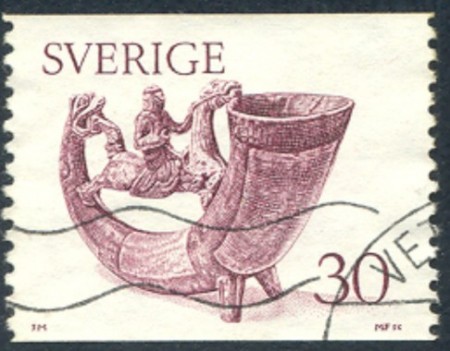
“
Stamp, 1976 showing a drinking horn from Sweden , 14th Century!
A third form is a plain cup or bowl widely expanded at the mouth and with a rounded base, so that it could only be set down when empty, in fact a true “tumbler.” This feature is in fact a very common. one in the drinking vessels of the Saxon race. (Editor’s note: we now call these a “stirrup cups.”) See Illus. #654 below on the 3rd print below.
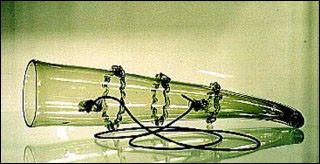
Medieval glass drinking horn, a replica.

Blown clear glass. Advertised on eBay in the fall of 2011 as: “Rare 17th century Dutch, curved drinking horn. Unusually large size 19 inches.” Without looking at it in my hands or knowing the seller’s qualifications on determining such, I might think it to be a “historismus” copy of a medieval horn. Another “crap shoot!”
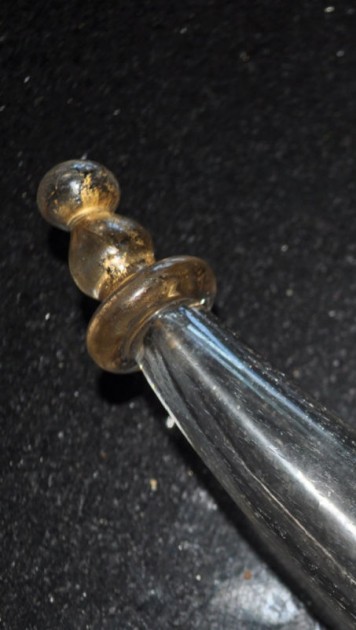
Detail of end finial of the glass horn above.
Sieglinde Drinking from a Horn, F. B. Doubek artwork.
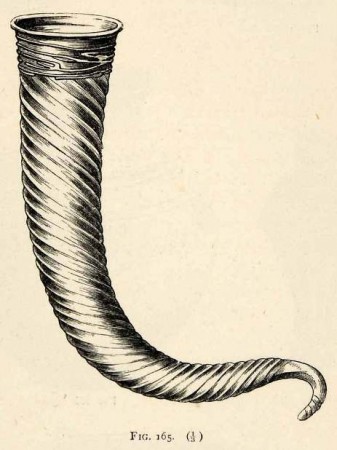
An 1882 Woodcut of a glass drinking horn, Iron Age, archaeological Item.
Of the later Saxon domestic utensils nothing remains, the habit of burying such objects with the dead having ceased on the gradual introduction of Christianity through the country. Manuscripts are our only resource, and they are not only of great rarity, but in the main rudely and conventionally drawn in their details. In those of the 9th to the 11th century various simple forms are seen, some resembling our modern tumbler in shape, others like a dice box.
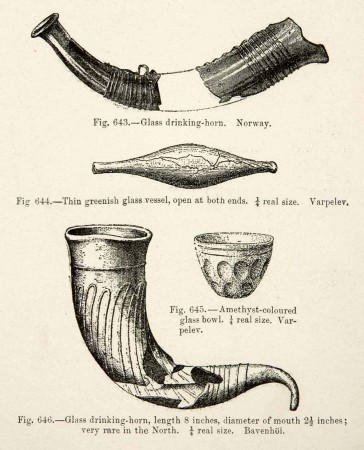
1889 Wood Engraving Glass Drinking-horn Norway Glass Vessel Ends Open, Viking Age
Horns as drinking vessels certainly retained their popularity at all times, surviving especially among the northern nations, and many of the vessels of this form were no doubt actual horns, though horn-shaped vessels were often made of other materials. Until we come to the I3th and I4th centuries there is an absolute dearth of the actual objects used in domestic life. And here we begin with plate used in the service of the church. ……
………………The materials of which chalices were made in the early centuries seem to have been as various as those of ‘ordinary vessels. Glass was undoubtedly a favourite substance, perhaps from its lending itself readily to scrupulous cleanliness; (Cont. below)
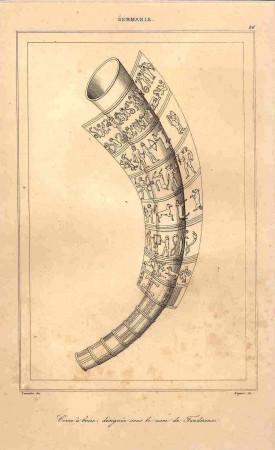
Antique print of ancient German ivory drinking horn.
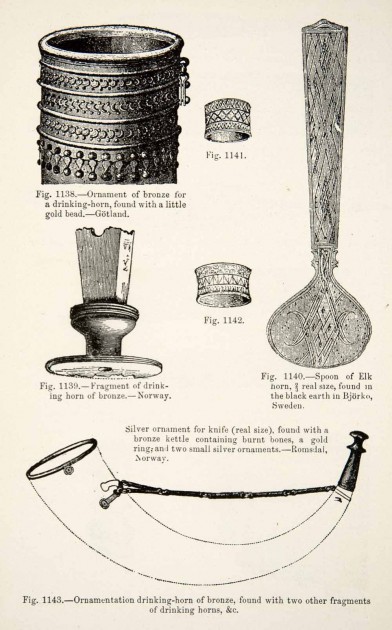
1889 Wood Engraving Ornament Drinking Horn, Spoon, Ornamentation Bronze, from Gotland
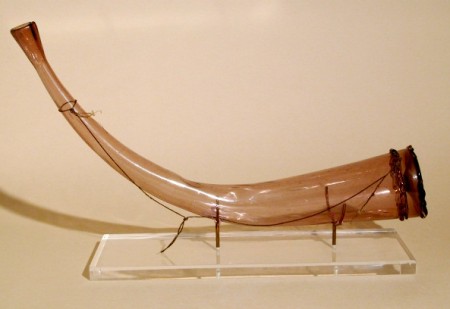
Blown glass drinking horn, Antwerp ,1680.
The process of blown glass drinking horns went from those such as in the example above in the 1680’s to the ones below in a short 200 years. Mostly decorative or used as vases.
.but wood, horn, ivory and similar materials were undoubtedly in use, and were from time to time condemned as improper by the Fathers of the Church. Pewter was in common use, and it was not an unusual practice in the 12th and I3th centuries to place sacramental vessels, of this or more precious metal, in the grave of an ecclesiastic. Bronze was also used, and the Kremsmunster chalice is of that metal, which was a favourite one in the Celtic church. but gold or silver chalices were no doubt always preferred when they could be obtained.!” “It may be mentioned here that it was a common practice in the 16th century and later in England for laymen to make gifts to the church of vessels of an entirely domestic character for use in the service. Many of these from their associations, and in the character of the designs upon them, were entirely unsuited for such purposes, and in our own time, when a healthy desire has sprung up for the proper investigation of such matters, many such unsuitable vessels have been withdrawn from use. Domestic plate, however, being much more highly appreciated by collectors, there has been a regrettable tendency on the part of the holders of such pieces to sell them to the highest bidders; the tendency is to be deplored, for while they remain the property of the church, they are a national asset; if sold by auction, there is a great probability of their going abroad.”
“In the 15th and 16th centuries the shapes, decoration and materials of drinking vessels were almost endless. A favourite object to be so adapted was an ostrich egg, and many can be seen in museums in elaborate silver mounts; coco-nuts were also used in the same way, and Chinese and other Oriental wares then of great variety, were often turned into cups and vases by ingeniously devised silver mounting. The use of drinking vessels either formed of actual horns or of other materials was common in the 15th and 16th centuries, especially in Northern Europe.”
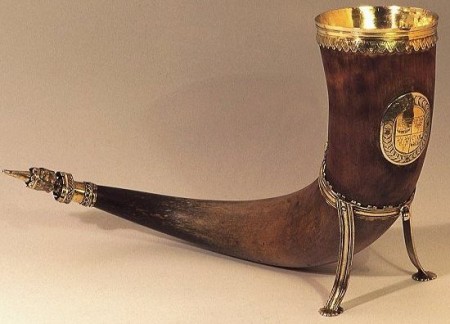
Drinking-horn in the possession of Queen’s College, Oxford, dating from the I4th century.
“They were usually provided with feet so as to serve as standing cups, and some of them were mounted with great richness. An excellent example is the famous drinking-horn in the possession of Queen’s College, Oxford, dating from the I4th century. The medieval beliefs about “griffins’ claws” still survived to this late date.”
I recently had some correspondence with a young medievalist and drinking horn collector, who designed and had this horn made, then presented it to a teacher of his. What a great present. Wish I had friends like that.
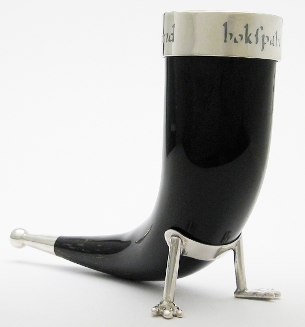
The silver reads: “SCHOLAR, TEACHER , FRIEND,” done in the 9th century old Saxon language! The similarity to the one just above was coincidental I understand.
CEREMONIAL DRINKING HORN, 1817.
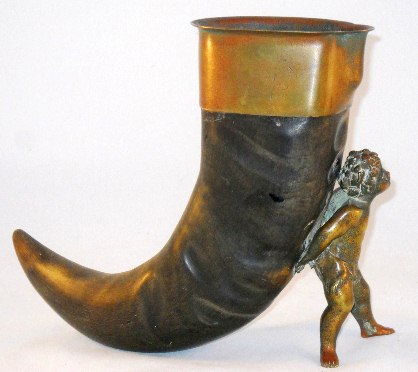
A more modern desigen say mid 1800’s. The figural putti supporter is of bronze, with the mounts being of copper. This one of course could be used as a vase, and probably was.
FOR A GREAT VIDEO SHOWING THE NORMANS AND DRINKING CUSTOMS: and the battle that changed the direction of Merri Old England.
http://www.youtube.com/watch?feature=iv&annotation_id=annotation_559561&v=LtGoBZ4D4_E
I found two diiferent credits for this same horn:
GUILD OF THE ARQUEBUSIER, AMSTERDAM– 1547
[&]
‘Drinking Horn of the Calivermen’s Civic Guard of Amsterdam’ by Arent Coster. Circa 1521-1563 , in Amsterdam.
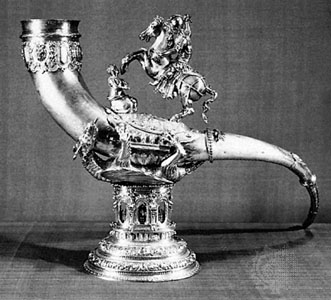
THE GUILD HORN OF ST. GEORGE 1566, Now in the RIJKSMUSEUM, AMSTERDAM. No size given. (Notice how the dragon is on its back and serves as the holder for the horn and mounts!)
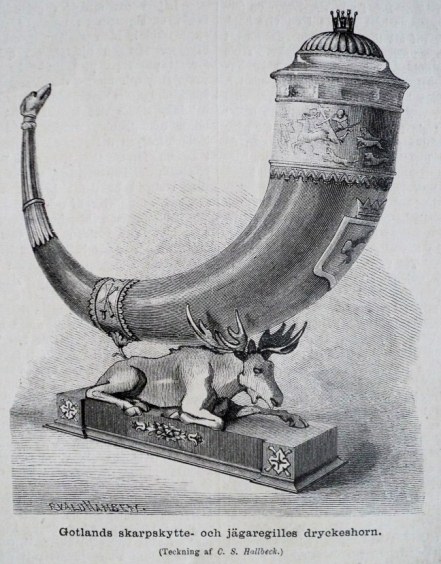
Other material than horn used for the “Horns.”
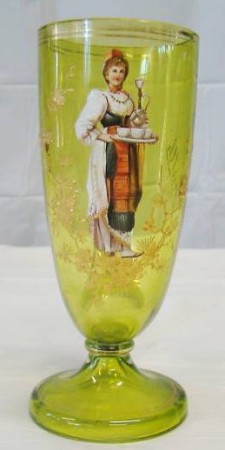
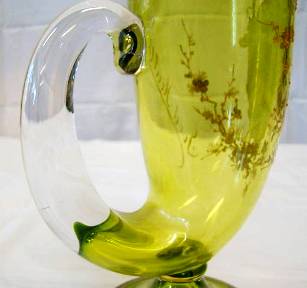
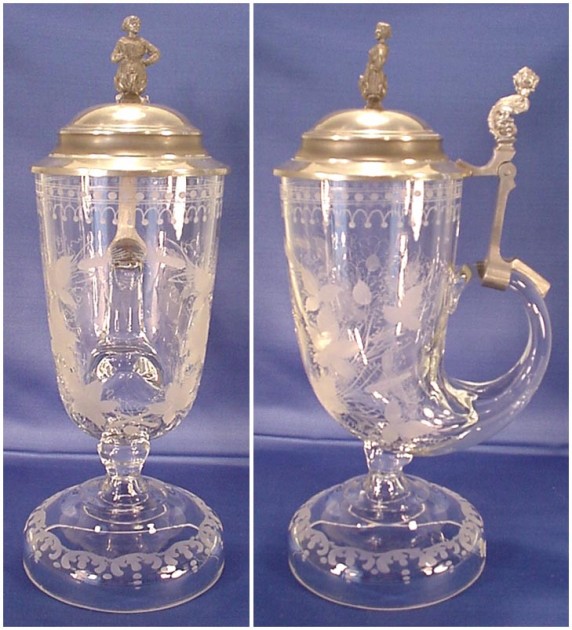
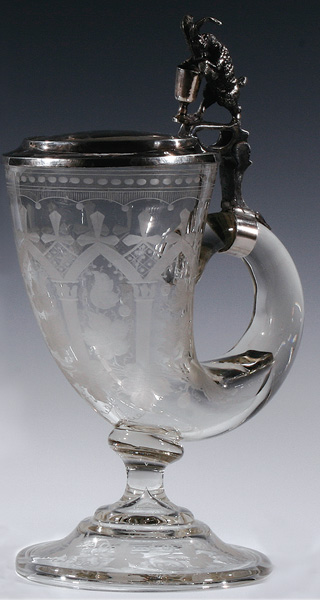
MANY OF THESE HAVE BECOME VASES OVER THEIR LIFE TIME, REGARDLESS FOR WHAT THE WERE MADE FOR.
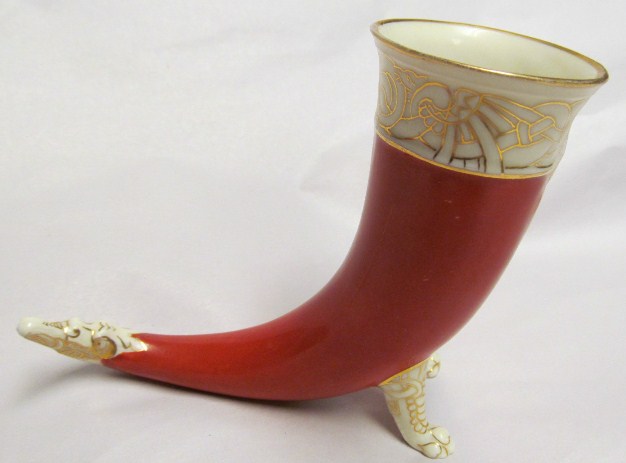
.
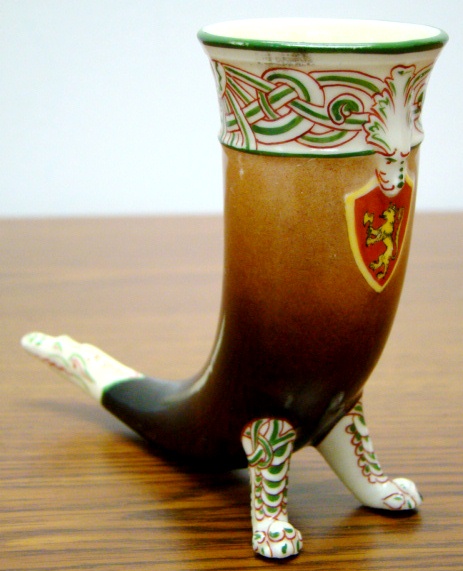
Porsgrund Porcelain, Norway – Porsgrunn porcelain factory was founded in Porsgrunn in 1885, These two pieces are Circa 1900-20 I believe.
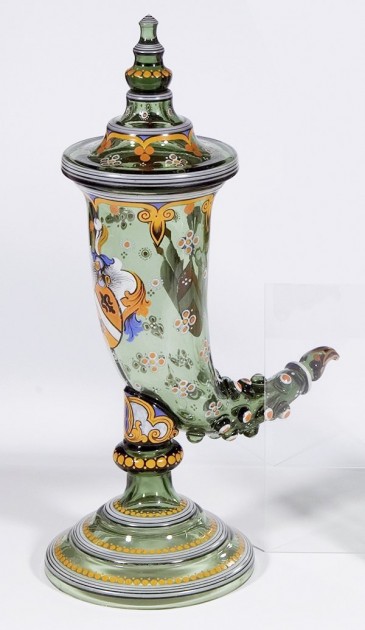
Enameled glass horn and stand (unmovable horn) Eggerman Bohemian, 1890’s.
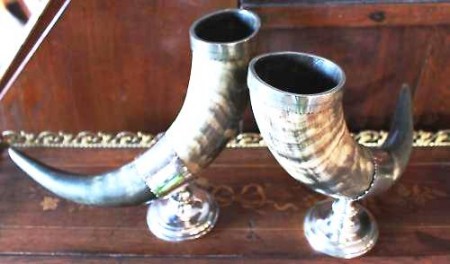
Whenever one sees two of these horns together – please be alert. They were probably made for, and used as flower vases and are not drinking horns!
_____________________________________________________________________
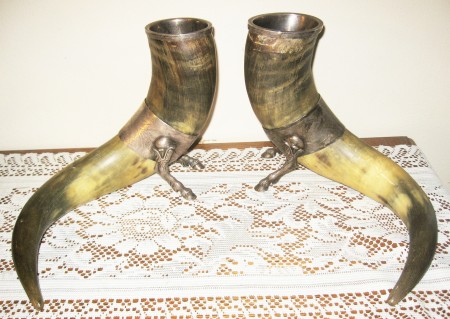
Another pair of vases or mantel displays. Length from point to butt is 18″. An insert goes 7″ deep, and the height with legs attached is 7 3/4″ from tabletop to top of rim. These have hoves as supporters, which is very unusual. I’m thinking English made. Ca. 1860 – 90.
AS DEPICTED ON A FEW DRINKING VESSELS
Some “Alt Germans” enjoying their drinking horn. [L] Detail of 1/s liter pottery stein. [R] 1/2 liter pottery relief stein, circa 1910 by Hanke.
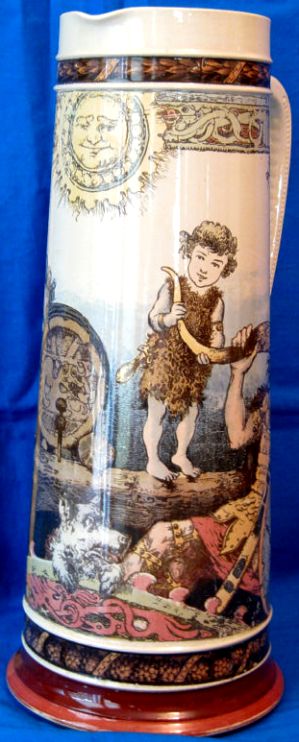
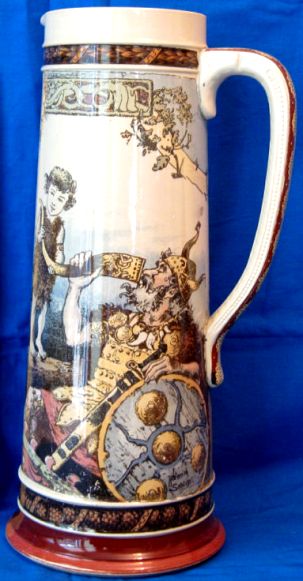
And of course even on a V & B Mettlach, PUG NO. 2261 – DEC- 1012.
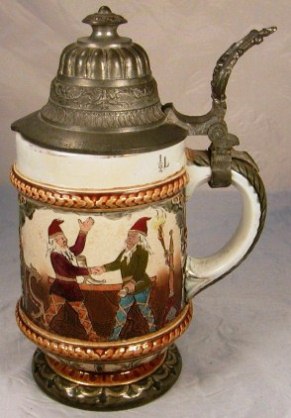
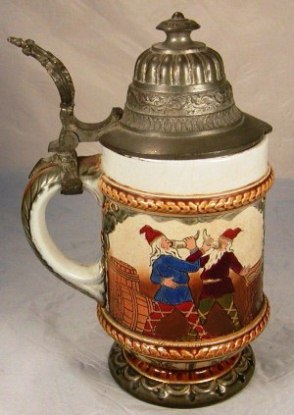
.5 liter Rorstrand (Sweden) Porcelain gnome stein, with lid added later.
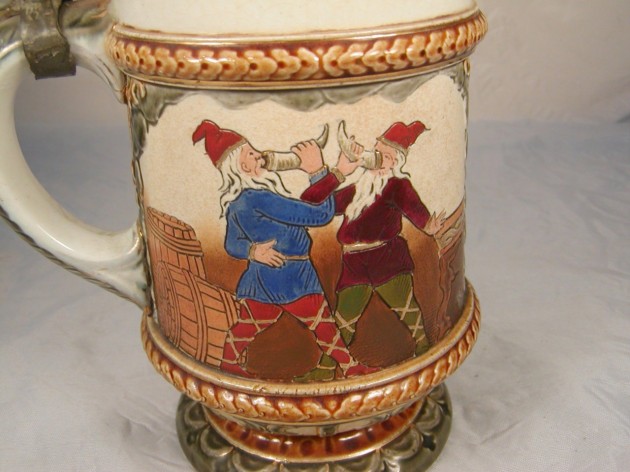
Detail of the Rorstrand gnomes toasting with small drinking horns.
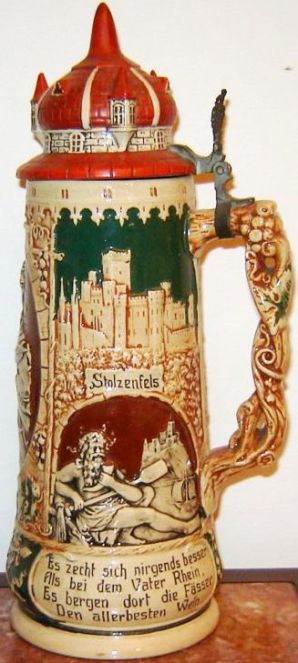
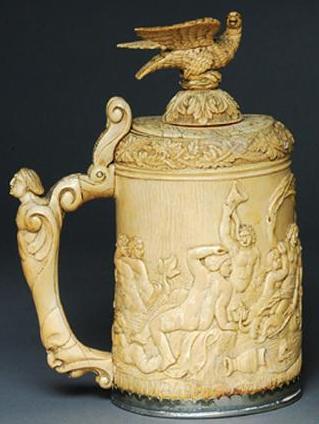
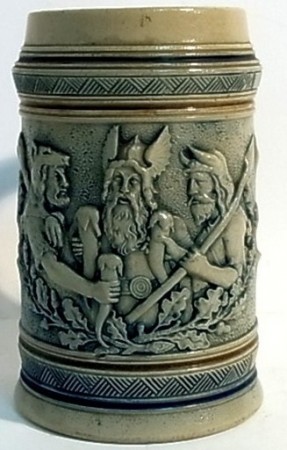
Detail of the ring in the lion’s mouth
Shown above: A pewter mounted horn made sometime in the mid 1900’s. Detail of the ring which is purely decorative as this type horn is made to sit on its feet.


With the advent of the ‘Renaissance Fairs’ become popular world wide, lots of handymen are making their own horns. This great example was sent to me by a reader. He did the horn and all the pewter work himself. What a neat hobby for the talented.
[Photos comps of Ronald Bosch, designer and maker.]
An older type of hand held horn made in Georgia, USSR, (and has the ”84′ silver mark) which used ‘niello’ in the engraved design and had a somewhat realistic bird’s head as the end finial.[FWTD]On earlier ones, (pre-USSR), the bird has a very long and open at the end beak, also with mounted green stone eyes.
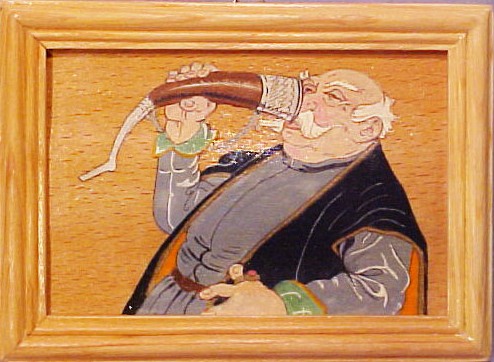
A newer, painting on board of an older gentleman drinking from a “bird headed”ended horn.
A “brand new” horn made in present day Georgia (the country not the state. I’m not certain the mounts are silver anymore. Looks like tin to me.
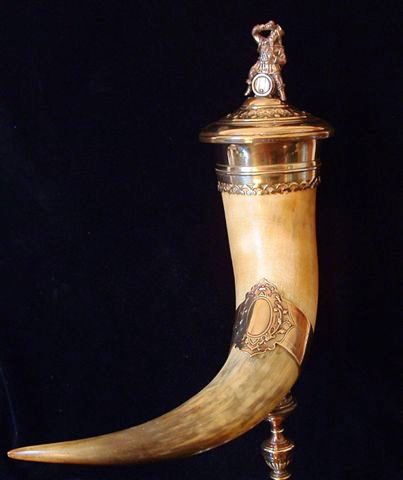
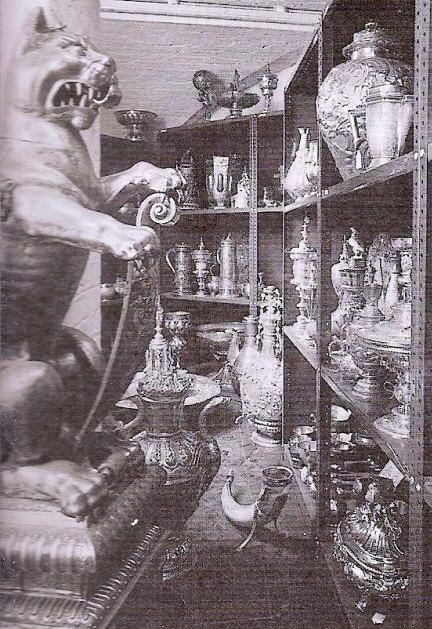
Above: These two horns have cords with alternating colors. These were probably the property of some student association and those were their primary colors on their coat of arms. Sorry, no sizes given, but large.
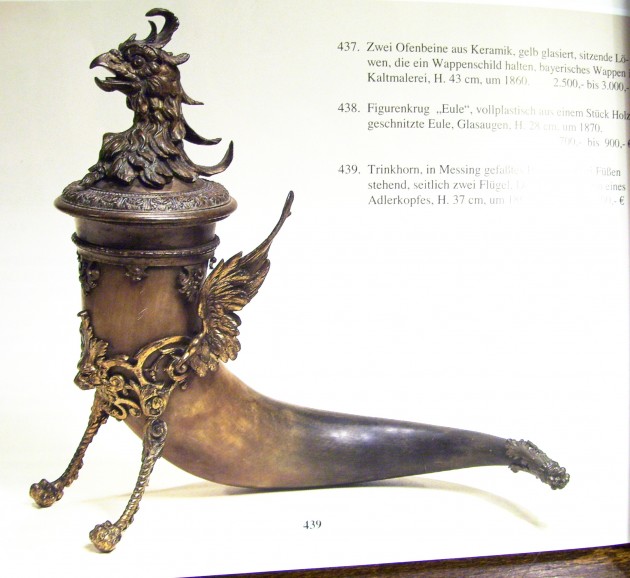
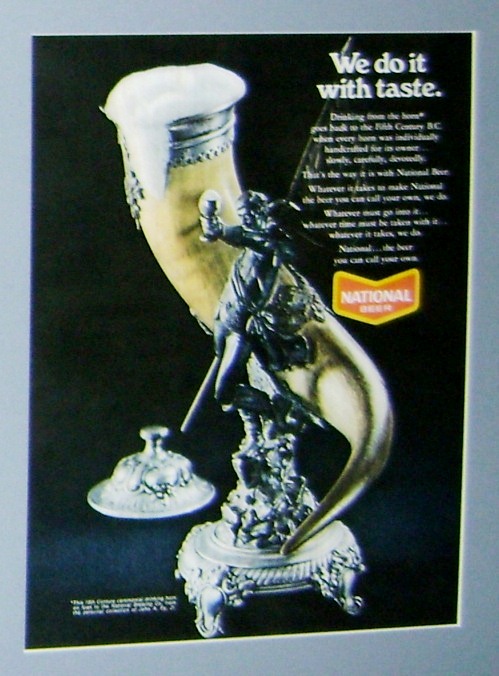
This 20 inch tall, silver- plated Student Society drinking horn, made by WMF about 1880-90, was once owned by Col. (Ret) John Ey, a member of the “Gambrinus Stein (Collectors) Club of VA, MD, and DC”. John was also one of the first SCI Master Steinologists and one hell of nice old guy to us “kids” back then. At least three of Col. Ey’s steins were featured in National Bohemian’s (Baltimore) Beer’s, ” Life Magazine” ad campaign. [For another one of his steins in this ‘National Bohemian’ sudsy beer foam series. See the other ad at: http://www.steveonsteins.com/theresienthal-glass-steins-photo-examples-1-3
This horn now resides at it’s new owner’s home, [via John Ey, via John Stuart, via Judy Stuart] now two states away of where John Ey retired and passed away. Here is a photo of it in its new location; in about the same pose as on the ad, but with the lid on it.
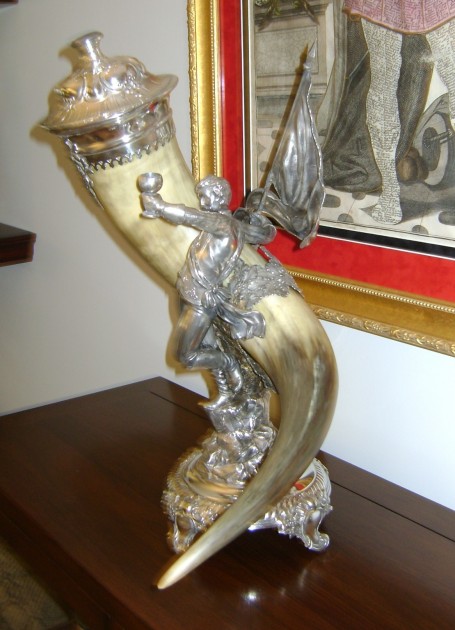
 “Why didn’t Noah swat those two mosquitoes?”
“Why didn’t Noah swat those two mosquitoes?”
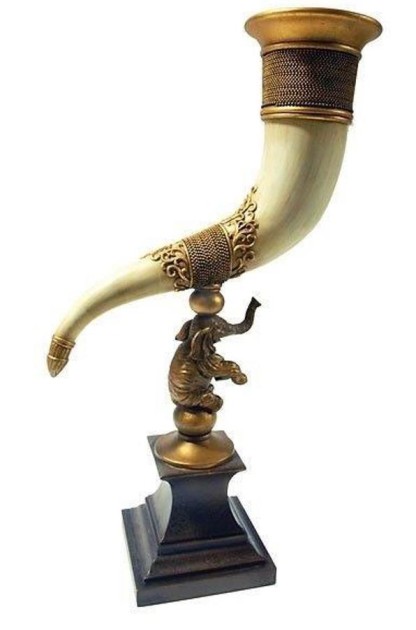
JANUARY 2014: ► [FWTD] A 30 Inch tall all ceramic drinking horn used for display. Not a real horn! This was a disaster waiting to happen!! There is an iron shaft coming from the base through the [also] ceramic ball just under the elephant. It was shipped and packed okay, but when I lifted it out of the box the upper body weight put way too much stress on the ball and the thing shattered into about 5 pieces, Now I have to figure some way to support the whole thing while being upright so I can try to repair the ball around the shaft. Good luck, Steve!
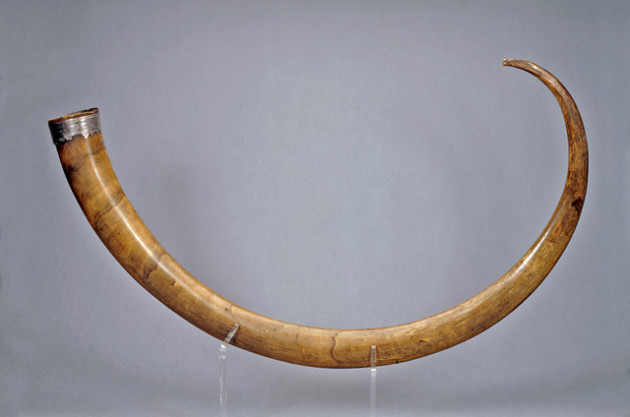
PHOTO AND TEXT COMING 4-1-14
Culture: English (Durham)
Date: mount: 1575–1625
Material: Ibex horn, silver
Dimensions: length: 71.1 cm
Inscribed: gryphi unguis divo cuthberto dunelmensi sacer (The claw of a griffin sacred to the blessed Cuthbert of Durham)
Provenance: Robert Bruce Cotton (1571–1631); Sir Thomas Cotton (d. 1662), by inheritance; Sir John Cotton (d. 1702), by inheritance; 1701, English Parliament, by donation; The British Museum, London, 1753, by transfer

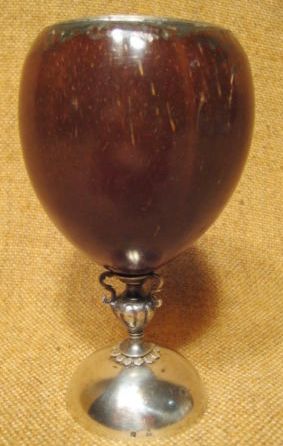
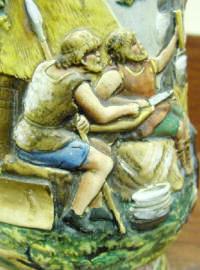
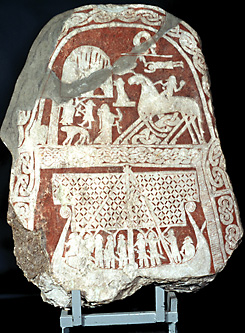
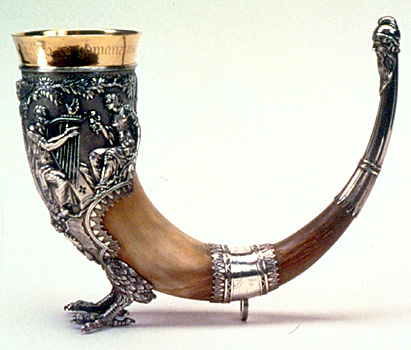
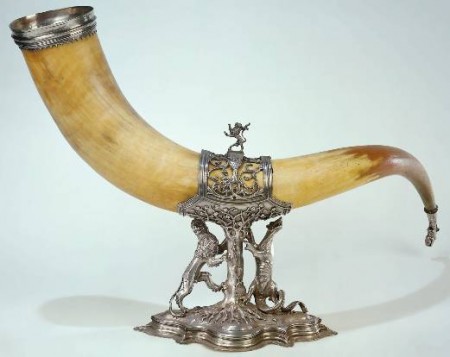
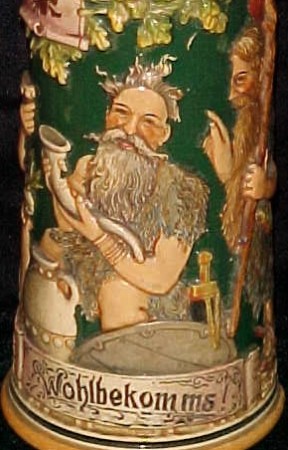
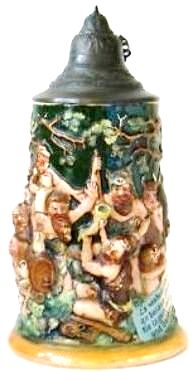
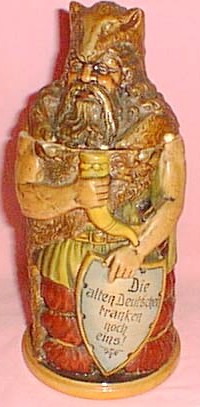
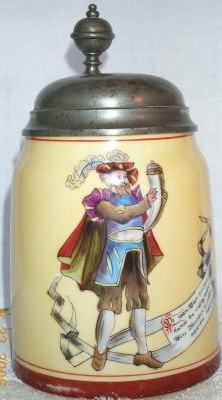
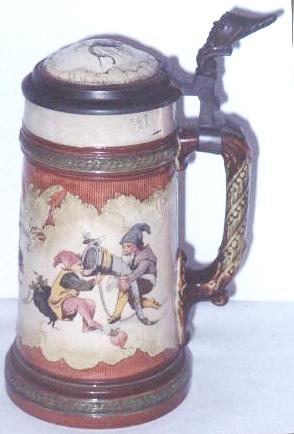
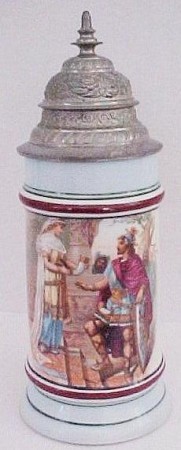
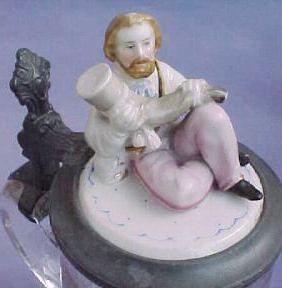
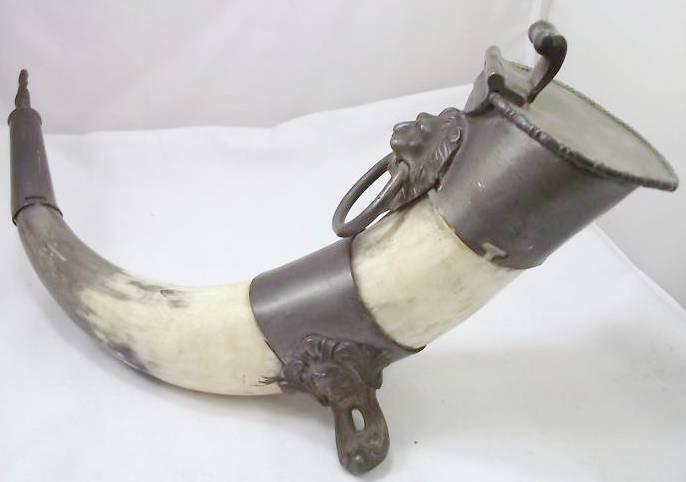
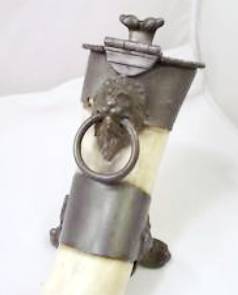
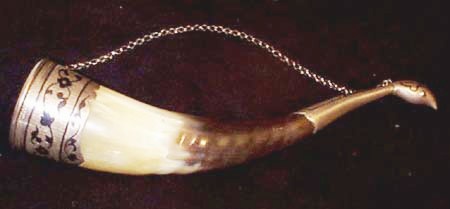
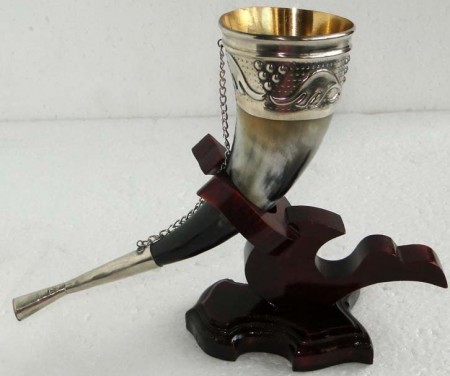
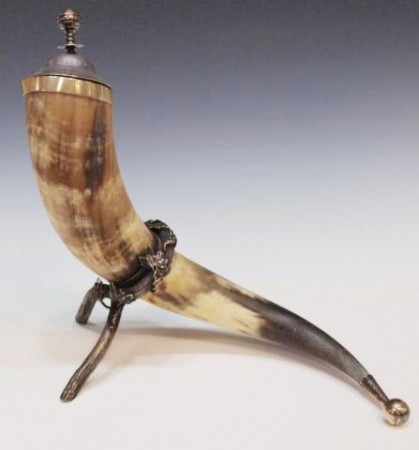
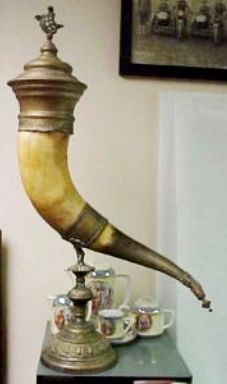

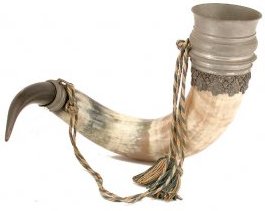
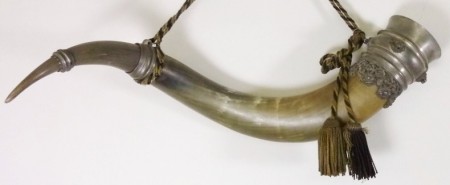
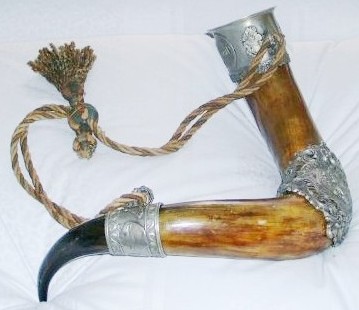
![1W HORN - GERMAN STUDENT 'S VANDALIA [Q]]( /wp-content/uploads/2010/05/1W-HORN-GERMAN-STUDENT-S-VANDALIA-Q.jpg)